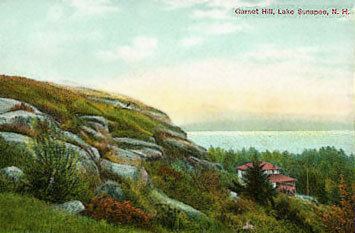 | ||
Glacial landforms are landforms created by the action of glaciers. Most of today's glacial landforms were created by the movement of large ice sheets during the Quaternary glaciations. Some areas, like Fennoscandia and the southern Andes, have extensive occurrences of glacial landforms; other areas, such as the Sahara, display very old fossil glacial landforms.
Contents
Erosional landforms
As the glaciers expanded, due to their accumulating weight of snow and ice, they crush and abrade scoured surface rocks and bedrock. The resulting erosional landforms include striations, cirques, glacial horns, arêtes, trim lines, U-shaped valleys, roches moutonnées, overdeepenings and hanging valleys.
Depositional landforms
Later, when the glaciers retreated leaving behind their freight of crushed rock and sand (glacial drift), they created characteristic depositional landforms. Examples include glacial moraines, eskers, and kames. Drumlins and ribbed moraines are also landforms left behind by retreating glaciers. The stone walls of New England contain many glacial erratics, rocks that were dragged by a glacier many miles from their bedrock origin.
Glacial lakes and ponds
Lakes and ponds may also be caused by glacial movement. Kettle lakes form when a retreating glacier leaves behind an underground or surface chunk of ice that later melts to form a depression containing water. Moraine-dammed lakes occur when glacial debris dam a stream (or snow runoff). Jackson Lake and Jenny Lake in Grand Teton National Park are examples of moraine-dammed lakes, though Jackson Lake is enhanced by a man-made dam.
Ice Features
Apart from the landforms left behind by glaciers, glaciers themselves may be striking features of the terrain, particularly in the polar regions of the earth. Notable examples include valley glaciers where glacial flow is restricted by the valley walls, crevasses in the upper section of glacial ice, and icefalls—the ice equivalent of waterfalls.
